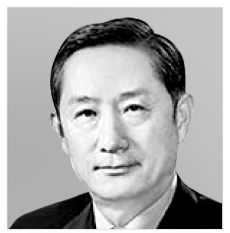The trap of good will

The author, a former policy director at the Ministry of National Defense, is dean of the Defense Science and Technology College at Dongyang University.
After the suspension of joint military exercises between the United States and South Korea, this year’s Ulchi Exercise, which tests our comprehensive response to war, was also canceled. The Ministry of National Defense said additional measures could follow if North Korea continues productive consultations with good will.
We can hardly find fault with the government for making efforts to establish a peaceful atmosphere by maintaining momentum on recent dialogue. But the latest stance that North Korea has taken since the summit with the United States makes me doubt whether pre-emptive measures based solely on South Korean optimism are appropriate.
North Korea has not started dismantling its nuclear weapons. Under such circumstances, a series of moves — such as suspending decades-old drills that are at the core of the South Korea-U.S. alliance — may send a wrong message to North Korea and hurt South Korea’s security footing.
Many expected U.S. Secretary of State Mike Pompeo’s visit to Pyongyang this month to bring a new breakthrough, such as a timeline for denuclearization or specific measures to fill in the blanks of the vaguely worded joint statement that came out of the summit.

South Korean soldiers participate in the Ulchi-Freedom Guardian exercise with U.S. forces in August last year. South Korea has suspended the drill this year in consideration of ongoing dialogue with North Korea. [YONHAP]
A few hours after Pompeo left Pyongyang, North Korea’s Ministry of Foreign Affairs claimed the United States made “unilateral and gangster-like demands” by asking for complete, verifiable and irreversible denuclearization. A personal letter from North Korean leader Kim Jong-un to U.S. President Donald Trump did not mention denuclearization. It makes me suspect the sincerity of North Korea and suggests that the North’s strategic calculation could be very different from our interpretations.
North Korea may be attempting to undermine the South-U.S. alliance by taking credit for secondary issues like sending back the remains of U.S. soldiers from the Korean War without addressing the essential issue of denuclearization and rushing to declare a formal end to the war. On the methodology of denuclearization, I am worried that Pyongyang will drag its feet by insisting on a “phased and simultaneous” approach, symbolically dismantling some of its nuclear weapons and missiles while pursuing the status of a de facto nuclear state.
In such an uncertain situation, there are signs that South Korea might suspend or postpone military strength-building plans — such as the three-axis Kill Chain, the Korean Missile Defense System and the Mass Retaliation Plan — in addition to the joint drills. South Korea’s armed forces are also in the middle of an internal process to reduce arms and withdraw its core military strength from the front lines. Since these moves can be implemented as denuclearization progresses, I cannot help but feel that the South Korean government is rushing.
Here, it is necessary to re-evaluate the current situation and adjust the speed of measures in pace with good-will moves and carefully review the direction. It is never too much to be prudent on military measures affecting the defense of the capital region. Withdrawing joint assets and mechanized units capable of disabling North Korea’s long-range artillery, which threatens Seoul, could be critical.
It is also not fair to delay the three-axis system that South Korea has started to build up in response to North Korea’s nuclear and missiles threats. The system is aimed at preparing for direct threats from North Korea in the short term, but in the long run, it is necessary to prepare for potential threats from the South’s neighbors. We should increase investment in high-tech weapons systems.
South Korea has shown enough sincerity to talks by suspending joint military exercises. The war games that use the latest technologies are the driving force for the combat capabilities of the South Korean and U.S. forces. They are the shortcut that helps the military to advance to elite forces by maintaining the highest readiness. As the U.S. military seeks to apply new strategies and tactics on the Korean Peninsula, South Korean forces can naturally share these best practices through joint exercises.
International military experts who watch the war games every year always envy the perks. Starting next year, the government and military are developing a model for our own exercise. The backbone of South Korea’s defense is the joint system with the United States, and the core of that system is the joint military command. If the command loses significance, with whom and where should it conduct exercises? When we seek a new way while keeping an eye on the progress of denuclearization, we can prevent hurting our security stance and alliance with the United States.
JoongAng Ilbo, July 19, Page 29










with the Korea JoongAng Daily
To write comments, please log in to one of the accounts.
Standards Board Policy (0/250자)